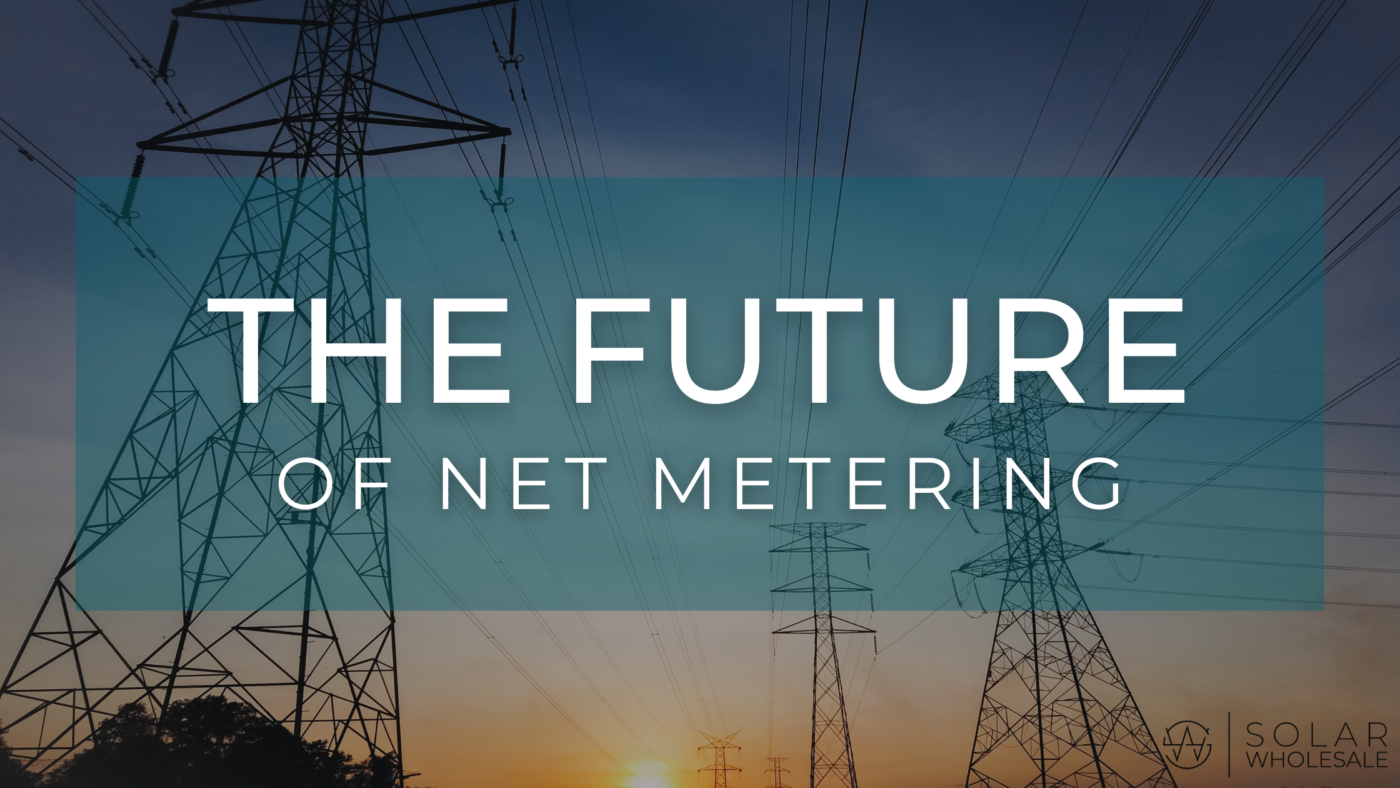
There are a lot of benefits of adding solar to your home. Not only does converting to solar help the planet, but you can save on utility bills and get a 26% tax credit. Another benefit for homeowners with solar is net metering, but what exactly is net metering (NEM)? 
NEM is essentially an agreement between solar homeowners and utility companies. Solar panels produce the highest amount of electricity during the day, however, homes usually need the least amount of electricity during this time. Because of this, solar panel systems can send the extra energy into the grid and get a credit for it. When your panels can’t produce as much, you can pull energy from the grid. The credits that you accumulate from the excess energy can offset the cost of the needed energy. Some experts claim that the best states for solar energy aren’t the sunny ones, but the ones with the best net metering policies.
What was Net Metering in the Past?
The first successful net metering project was in Massachusetts in 1979. Idaho, Arizona, and Massachusetts adopted NEM for small scale wind turbines and solar PV in the early 80s, but Minnesota was the first state to pass a net metering law. In 2005, Congress passed the Energy Policy Act of 2005 which encouraged states to offer net metering but the act didn’t specify compensation.
By 2010, every state except Tennessee had electric customers utilizing net metering with California having the most. While the 2005 Act promoted net metering, it was still up to the state to determine specific policies:
- Capacity Limits – Arizona, New Jersey, Ohio, and Colorado didn’t place a capacity limit on eligible generators (including solar systems), but most states limited capacity anywhere from tens of kilowatts to the highest at 80 megawatts in New Mexico.
- Power Providers – Some states required only public utilities to have net metering tariffs, but excluded municipal utilities. Other states only required large utilities to offer net metering tariffs.
- Customer Compensation – Similar to today’s net metering policies, some states offered solar customers a retail rate credit for the energy they produced for the grid. Others offered a credit based on the wholesale price.
What is Net Metering Today?
In 2020, a petition to end NEM in the U.S. was denied when Federal Energy Regulatory Commission (FERC) commissioners voted to dismiss it. While the petition being thrown out was a win, net metering is still up for debate. Utility companies are looking for ways to work around net metering policies claiming that it’s costing them money or shifting the cost to non-solar customers.
Each state looks at net metering differently, but what do today’s policies look like compared to when net metering laws first started?
- Capacity Limits – New Jersey and Ohio still don’t have any capacity limits and New Mexico is still capped at 80 megawatts. The most common cap seems to be 20-25 kilowatts, but Arizona caps systems at 125% of the customer’s connected load.
- Power Providers – Many states include all or at least the majority of all utilities in their policies. However, a few only include investor-owned utilities in the practice.
- Customer Compensation – Compensation has become more complex as policies have changed, but NEM can still offer monetary benefits for customers. A few states have implemented “demand charges” or a monthly fee that reflects the solar customers peak demand from the grid during certain periods of time. Some states offer a full retail rate for the credits while others offer a wholesale price credit. Many states that offer credits allow the credits to rollover from month to month so solar customers can draw from these credits in the colder months when their solar panels won’t produce as much.

What Does the Future Look Like?
The changes to NEM policies from 2005 to now haven’t completely favored solar customers. In fact, many utility companies are pushing for policy changes claiming that metering costs the companies money or shifts the cost to non-solar customers.
- Capacity Limits – Based on the changes, it’s likely that capacity limits won’t change too much in the next 10 years. However, based on some states’ decisions in 2020, it’s possible that additional fees may be implemented for solar systems over a certain size.
- Power Providers – It’s hard to say what providers will offer net metering in the future as it could depend on policy changes. If states don’t require utility companies to offer NEM, it’s not likely that the practice will continue.
- Customer Compensation – It’s fair to say that many utility companies are pushing for smaller rates for excess power sent to the grid. While some states are still passing solar-friendly laws, ones like Kentucky are drastically reducing the compensation that solar customers can receive.
NEM policies are a great added benefit for current solar customers, but the future of these policies is up for debate. However, net metering is not the only benefit for homeowners with solar. The best way to ensure you’re maximizing the benefits of solar is to install solar while policies are in favor of the homeowner and match your solar system as closely to your energy needs as possible. Another option is to install a battery that can store the excess energy from your panels and potentially lower your dependency on the grid. Solar Wholesale project managers can help you determine the best solar system for you.


